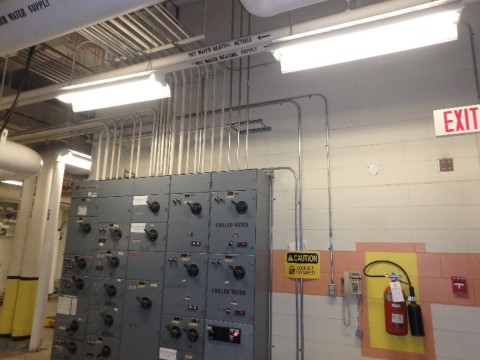This article was prepared for the sole purpose of making you aware of Arc Flash hazards and prompt you to think about safety measures at your facility and/or workplace. Information provided in this article is based on review of relevant codes and standards at the time it was prepared. It is not intended to be an all-encompassing Arc Flash source nor reference to all applicable codes and standards.
What is an Arc Flash (AF)? What are the dangers?
AF is a type of electrical explosion that occurs when electrical energy passes through the air from a higher voltage conductor to a lower voltage (usually ground) conductor. An AF can happen in milliseconds with extreme heat, pressure and light. Lightning is an example of an extreme AF event. The heat produced from severe arc flashes can be up to 35,000 degrees Fahrenheit (4 times the surface temperature of the sun); the blast pressure waves on the chest (should you be close by when it occurs) can be higher than 2000lbs per square foot; and the intense light can cause blindness.
What is your responsibility?
AF labeling of electrical equipment is the responsibility of the employer, not the manufacturer, installer or the worker. Labeling is required at each piece of equipment that may need servicing, maintenance or adjustment while being energized. Examples of electrical equipment that need AF labels are: electrical switchboards, panelboards, disconnect switches, splitters, and transformers.
The employer should engage an experienced electrical professional engineer to conduct an AF analysis in compliance with the latest codes and standards. Since the employer must assess the workplace for electrical hazards and the need for PPE under the OH&S, the employer is expected to use the best means available to comply with this requirement. In the event of an injury or fatality due to an electrical accident such as an arc flash, then the arc flash analysis and corresponding warning labels can be used as evidence that the employer took reasonable safety measures and acted responsibly.
What are the legal requirements for PPE?
According to the Occupational Health and Safety Act and Regulations (OH&S) 2018:
“(1) A worker shall wear such protective clothing and use such personal protective equipment or devices as are necessary to protect the worker against the hazards to which the worker may be exposed”
“(2) A worker’s employer shall require the worker to comply with subsection (1).”
For AF hazard protection, the required PPE specifically includes: cotton, flame resistant (FR) clothing, voltage rated gloves, boots, ear plugs, face shields, full-coverage flash suits, and insulated blankets.
In the event of an injury or fatality caused by an arc flash, the negligent corporation that doesn’t require their workers to wear appropriate personal protective equipment (PPE) could be fined significantly. Examples of AF fines can be found in the following links:
https://www.e-hazard.com/blog/canadas-hydro-one-fined-on-electrical-arc-flash-incident/
https://safety.blr.com/workplace-safety-news/equipment-and-process-safety/electrical-safety/Arc-flash-burns-lead-to-over-100K-in-fines.-Are-yo/
How to determine what types of Arc Flash PPE to use, and when to use it?
Flame-resistant clothing is rated in calories/cm2 (a measurement of incident energy), and can be rated up to 40 cal/cm2. The incident energy, obtained from an AF analysis and included on AF warning labels, is the thermal energy per unit area received on a surface located a working distance away from the AF location. Workers use this information to determine the proper type of PPE worn when doing servicing work at the equipment. For incident energy greater than 40 cal/cm2, there is no proper PPE that can be used while working with energized equipment. Therefore, the equipment must be de-energized prior to performing servicing or maintenance work.


